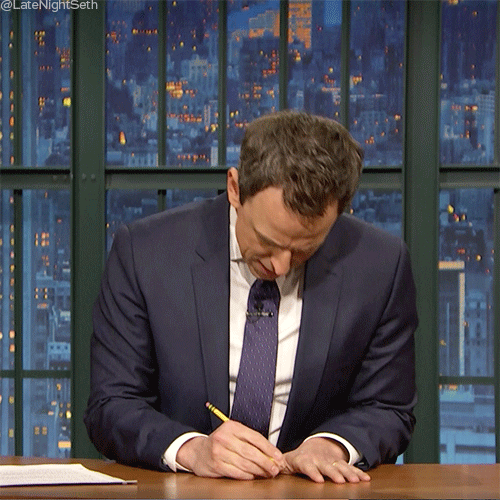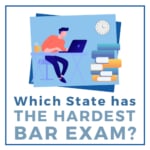The Multistate Performance Test (MPT) is the part of the bar exam that most closely mimics the practice of law. But it’s only worth 20% of your bar score, so many people neglect it in favor of more heavily-weighted sections. This is a huge mistake! Doing well on the MPT can actually be the saving grace that helps you pass the bar examination.
Below, we discuss what the MPT is and what it tests:
See the Top BAR Review Courses
- 1. BarMax Review Course ◄◄ Best Overall BAR Review Course + No Discounts
- 2. Quimbee BAR Prep Course ◄◄ Best Price
- 3. Kaplan BAR Review Courses ◄◄ Expert Instructors
 Use of the MPT
Use of the MPT
The National Conference of Bar Examiners developed the MPT. Currently, 43 states include this section of the test on their bar exams. These jurisdictions have the option to use one or both MPT sections as part of their bar exams, but jurisdictions that administer the UBE use both of these sections.
Multistate Performance Test Format
The MPT is made up of two 90-minute sections. Unlike all other aspects of the bar exam, the MPT does not test substantive knowledge. Instead, the test makers give you certain information that you use to complete a specified task.
This portion of the test assumes that you do not have any legal knowledge. You must only use the material that the test takers have provided to complete the task.
Each MPT is based on a different scenario, such as you being a first-year associate at a law firm or a lawyer at a government agency. You receive a communication from your boss and are expected to complete a task, such as:
- Writing a memo
- Preparing a legal brief
- Drafting a will
- Preparing a statement of facts
- Creating a discovery plan
- Developing a witness examination plan
- Preparing a closing argument
- Writing a letter to a client
- Preparing a contract
- Developing a counseling plan
- Drafting a proposal for settlement or an agreement
You will receive two sets of documents.
The File
The file will consist of a variety of documents that you will examine and potentially use to help with the completion of the task you have been assigned. These documents may include:
- Transcripts of client and witness interviews, depositions or hearings
- Client documents
- Contracts
- Medical records
- Police or accident reports
- Newspaper articles
- Other forms of communication
- Lawyer’s notes
These materials form the facts and the basis for your task. It is your job to use them effectively to provide an answer.
The NCBE notes that these documents contain relevant and irrelevant information. Test takers must also carefully analyze the instructions from their supervising attorney since they may not be complete or reliable. You must be able to recognize when certain facts are missing and be able to identify sources of facts.
The Library
The library is your toolbox. It is the source of the legal rules or principles that you will use to craft your answer. Like with the file, you may receive irrelevant information, so you must be able to figure out which rules actually apply and which are red herrings.
The library may consist of cases, rules, statutes, or regulations that you must use to analyze the problem and complete the task that has been assigned to you. You are not expected to know any rules or laws that are not included in the library.
Learn More About The BAR Exam
- Take These Steps To Pass The Bar Exam!
- How To Crush The Essay Portion Of The Bar Exam
- How To Study For The BAR While Working Full Time!
- How To Pass The BAR After Failing The First Time
- How To Become A Lawyer
 What the MPT Tests
What the MPT Tests
The MPT was developed to determine a test taker’s competence to practice law. It tests the ability to use basic lawyering skills in a real-life simulation and complete an activity that a new lawyer should be able to complete.
The MPT tests:
- Your ability to separate relevant and irrelevant information from the materials provided
- The ability to analyze legal principles given a set of materials
- Your ability to apply the relevant legal principles to the facts in order to solve a problem
- The ability to notice when an ethical problem arises and resolve the problem in an ethical manner
- The ability to communicate effectively in a written format
- Your ability to complete a typical legal task within time constraints
Top 7 MPT Bar Exam Tips
Like other aspects of the bar exam, you can study and prepare for the MPT. It’s important not to neglect this aspect of the test. Because you don’t have to have any particular knowledge of the law to do well on this section, you can make a real difference in your score by practicing this section and make up points that you lost in other sections of the test.
1. Complete MPT Practice Tests
Nothing beats taking real bar exam test questions! The NCBE provides free MPT exams and answers for older tests and newer ones that you can purchase.
2. Practice Under Timed Conditions
You might want to be more thorough on your first couple of tests. Be sure that you’re identifying all major issues and properly addressing them. However, you should quickly shift to practice under timed conditions. You will have 90 minutes per each MPT question, so you should be able to complete your answers within this timeframe. Use an alarm to keep you on track.
Also, you might want to consider splitting up your time on the test between the research you complete and the writing. Some may make this a 50/50 split with 45 minutes for each task while others may prefer more time to research or write. Try a couple different strategies to see what works for you.
3. Order Your Reading
When tackling MPT questions, read the documents in the following order:
- Memo
- Statutes
- Facts
- Rest of library
Be sure that you read each memo twice so that you do not miss anything. The memo will set out instructions on what your answers should include. It will also tell you the tone that you will need to use, such as objective or persuasive.
As you go through the memo, identify the headings that you will need to include in your answer. Carefully identify the issues. Make notes as you read through the facts. Highlight any numbered lists that may reveal elements. Try to eliminate any irrelevant information so you don’t get sidetracked.
When reading through cases, note the jurisdictions and look for facts that differentiate cases from one another.

The two most common tasks that MPT exam takers are tested on are objective memos and persuasive briefs.
Remember how to format legal memos on the MPT
When completing an objective memo for the MPT, read the memo and check who the audience is. It is often a senior attorney who will not be confused by legal terms. As you write the memo, don’t assume that all issues will favor your client’s position. Point out the relevant laws and cases that will likely weigh against your client. Additionally, remember to include a conclusion for each paragraph. Ultimately, your writing and legal analysis should try to persuade the scorer why your position is correct, which may or may not be in your imaginary client’s favor.
Analyze each argument and be able to present and battle counterarguments. Effectively use case law to support your positions. Use similar cases to support your position and distinguishing characteristics to say why an unfavorable case will not derail your argument. Include sufficient facts to make analogies or distinguish case law. Don’t assume that the audience will know all of the relevant case law.
Persuasive briefs
For persuasive briefs, you are usually required to omit certain aspects of memos, such as the caption, statement of the case and statement of the facts. However, you should read your instructions carefully to determine what you’re supposed to include and exclude. Then, focus on your legal argument. Use strong headings that contain the rule of law and determinative facts. Subsequently, you’ll focus on making your argument in the body.
5. Don’t Forget the Other Side
Whether you’re specifically told to or not, don’t forget to address the other side’s position. Raise the counterarguments that the other side would likely bring up and address the strength of each one. This will help boost your score and show that you are aware of both sides of the argument.
6. Grade Your Answers
Many test takers go through the process of studying for the MPT, taking timed tests, and practicing, practicing, practicing! But it all falls apart when they grade their answers. In fact, some test takers don’t grade their practice answers at all, while other people may just quickly skim through answers.
If you’ve gone through the process of obtaining test answers and score reports, use them! Carefully comb through the sample student answer and grade. Analyze the student answer and the NCBE score sheet to check your own answer for the following:
- Whether you had a similar format
- Whether you identified most of the issues
- Whether you recited the most important facts and case law
- Whether you applied the law correctly
- If your analysis on the issues was accurate
- If you reached the proper conclusions
- If your answer is well organized
Use this careful analysis to determine your strengths and weaknesses. Then, focus on the areas where you need some more help.
Get Discounts On BAR Review Courses!
On Test Day
On the test day, be sure that you get plenty of rest. Avoid studying in the morning before the test. Eat a hearty breakfast and stay hydrated.
Some additional tips to use on test day include:
7. Pay Close Attention to the Task Memo
In your excitement, you may miss an important point in the task memo, such as the format you should use, the sections to include in your answer or the tone that you should use with your audience. This can deduct serious points from your score simply because you missed a small detail in the task memo. Read the memo closely and underline relevant instructions so that you won’t forget them.
8. Format Your Answer
By now, you should have gone through several MPT questions and answers and you should be familiar with the basic format for your answer. Whether you are using IRAC, URAC, CREAC or some other -AC, throw your basic format on the screen to keep you organized. Then, as you go through the problem, make notations under each section that will be relevant to the analysis.
Use headings for each major part of your outline. Include at least one paragraph under each section. Your heading should be clear and provide an answer to each issue. Discuss the relevant law that you were given in the library. Start with the basic rule and then the exceptions or more specific rules. Follow with your analysis. You will need to state whether the facts present in your case and recited in the file are similar to or different from the facts of other cases. Use these facts to make an analogy or distinguish these cases from your assignment.

Don’t get too bogged down on one aspect of the argument. Your memo will probably ask you to answer several questions or address several issues. Highlight this information in the memo when you first receive it. Then, refer back to the memo several times as you complete the answer to make sure you don’t miss anything.
10. Ignore the Irrelevant
You might be tempted to use every fact, rule or case. After all, it’s right in front of you! However, one of the skills tested on the MPT is the ability to distinguish relevant information from irrelevant information. Avoid discussing any issues that the task memo does not raise or rules that don’t apply to the question. If an examiner did not ask a question, you won’t earn any points by answering it.
Crush It!
Well, now you know what the MPT is and how you can conquer it! Follow these tips to maximize your time and develop an effective study plan. Also, avoid common mistakes that other test takers might make. Be sure to check out our blog for more tips on the MPT and the rest of the bar exam.
COMPARE THE BEST BAR PREP COURSES

Valerie Keene is an experienced lawyer and legal writer. Valerie’s litigation successes have included wins for cases involving contract disputes, real property disputes, and consumer issues. She has also assisted countless families with estate planning, guardianship issues, divorce and other family law matters. She provides clients with solid legal advice and representation.

 What the MPT Tests
What the MPT Tests




